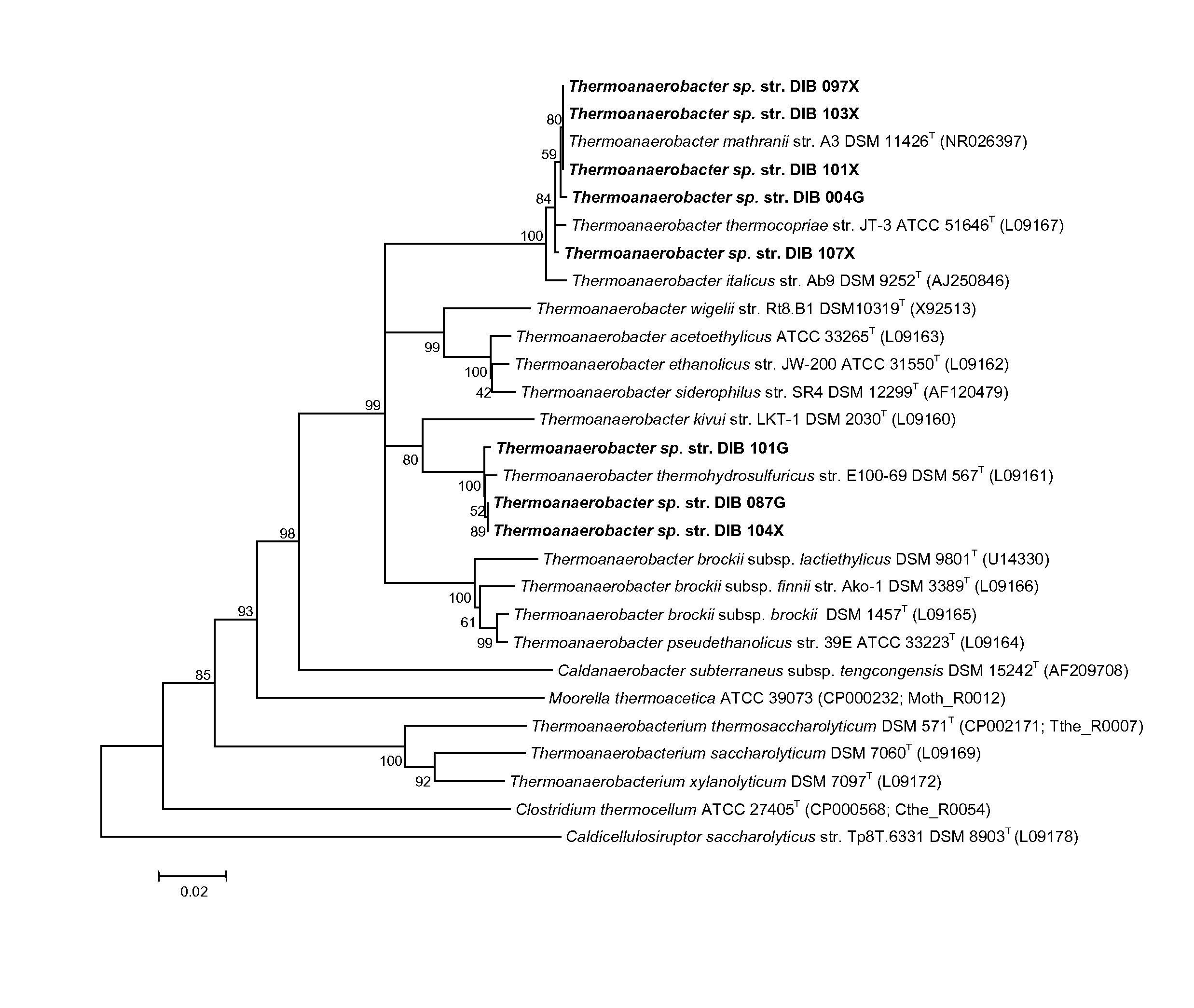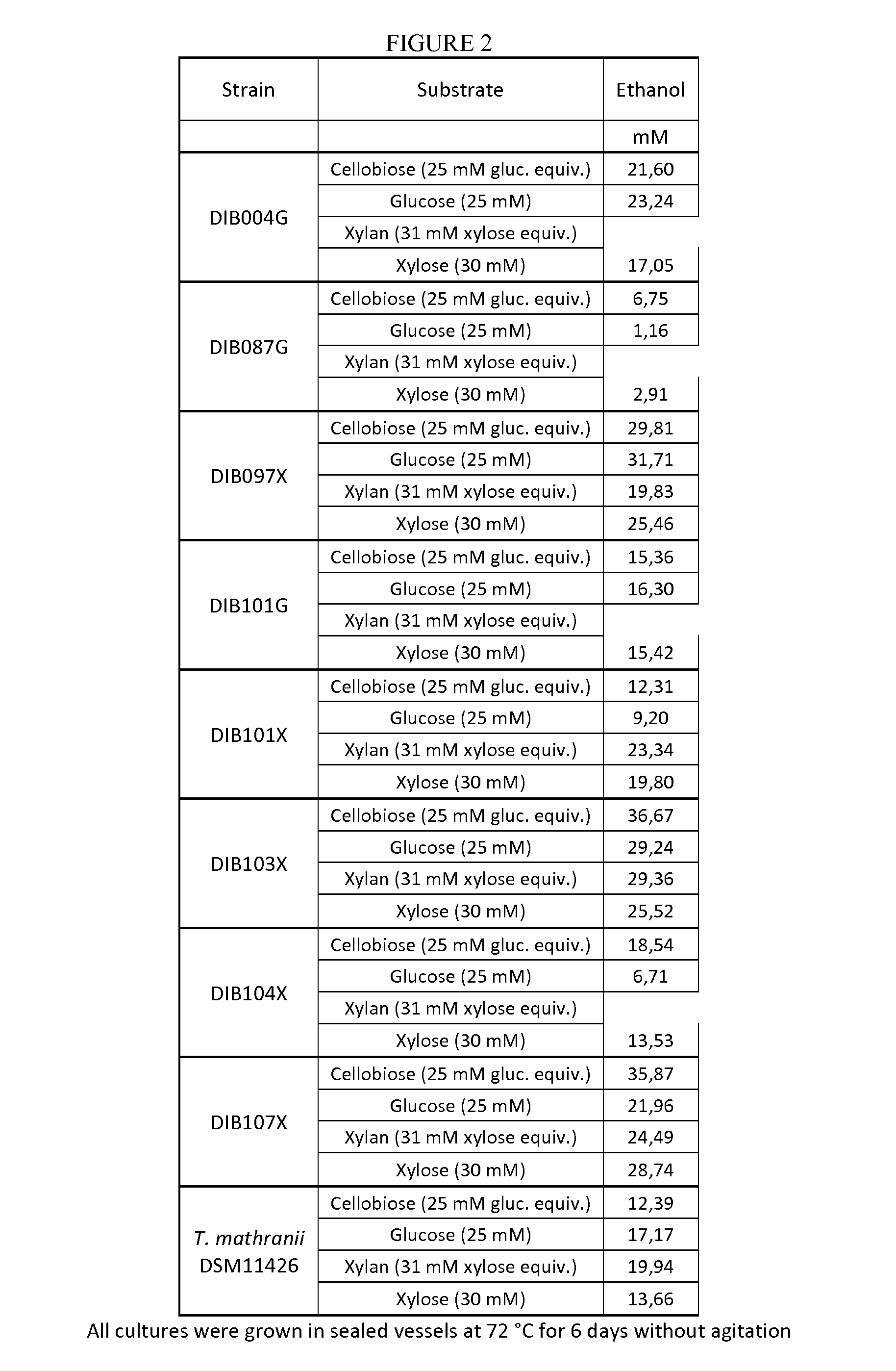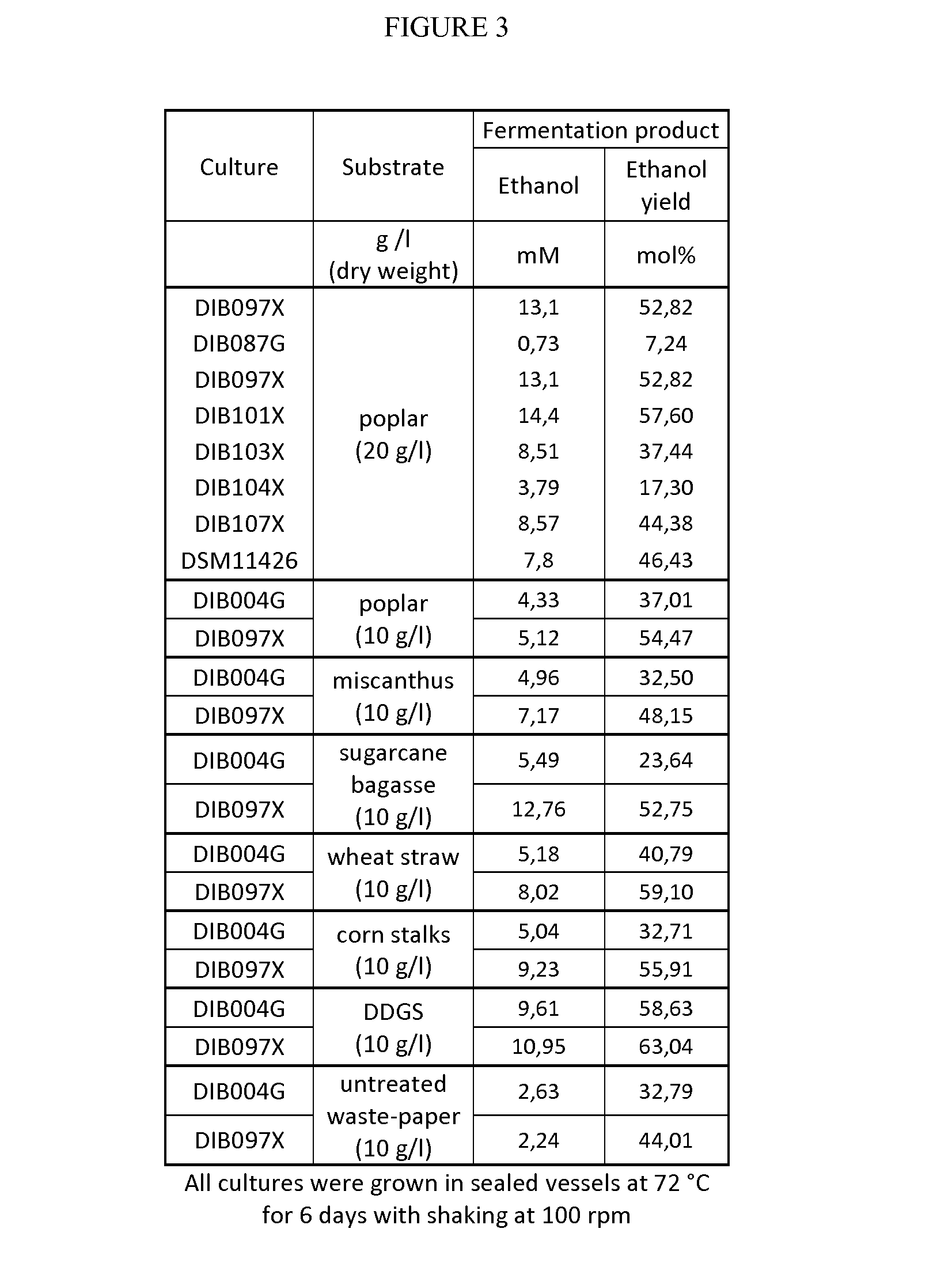High efficiency biofuel production using extremely thermophilic bacteria
a biofuel and thermophilic technology, applied in biofuels, microorganisms, biochemistry apparatus and processes, etc., can solve the problems of increasing food costs, facing the challenge of redirecting the production process, and cellulosic biomass is a vast poorly exploited resource, and achieves high productivities and substrate conversion rates , the effect of wide substrate specificity
- Summary
- Abstract
- Description
- Claims
- Application Information
AI Technical Summary
Benefits of technology
Problems solved by technology
Method used
Image
Examples
example 1
Isolation and Cultivation
[0108]All procedures for enrichment and isolation of strains listed in table 1 employed anaerobic technique for strictly anaerobic bacteria (Hungate 1969). The strains were enriched from environmental samples at temperatures higher than 70° C. with crystalline cellulose and beech wood as substrate. Isolation was performed by serial dilutions in liquid media with xylan as substrate followed by picking colonies grown on solid agar medium at 72° C. in Hungate roll tubes (Hungate 1969).
[0109]The cells are cultured under strictly anaerobic conditions applying the following medium:
Basic mediumNH4Cl1.0gNaCl0.5gMgSO4 × 7 H2O0.3gCaCl2 × 2 H2O0.05gNaHCO30.5gK2HPO41.5gKH2PO43.0gYeast extract (bacto, BD)0.5gCellobiose5.0gVitamins (see below)1.0mlTrace elements (see below)0.5mlResazurin1.0mgNa2S × 9 H2O0.75gDistilled water1000.0mlTrace elements stock solutionNiCl2 × 6H2O2gFeSO4 × 7H2O1gNH4Fe(III) citrate, brown, 21.5% Fe10gMnSO4 × H2O5gCoCl2 × 6H2O1gZnSO4 × 7H2O1gCuSO4 ×...
example 2
HPLC
[0112]Sugars and fermentation products were quantified by HPLC-RI using a Via Hitachi LaChrom Elite (Hitachi corp.) fitted with a Rezex ROA Organic Acid H+ (Phenomenex). The analytes were separated isocratically with 2.5 mM H2S04 and at 65° C.
example 3
Phylogenetic Analysis of 16S rDNA Genes
[0113]Genomic DNA was isolated from cultures grown as described above and 16SrDNA amplified by PCR using 27F (AGAGTTTGATCMTGGCTCAG; SEQ ID NO. 9) as forward and 1492R (GGTTACCTTGTTACGACTT; SEQ ID NO. 9) as reverse primer. The resulting products were sequenced and the sequences analyzed using the Sequencher 4.10.1 software (Gene Codes Corporation). The NCBI database was used for BLAST procedures.
[0114]Alignment was carried out using ClustalW (Chenna et al. 2003) and the phylogenetic tree was constructed using software MEGA4 (Kumar et al. 2001). The tree for all strains listed in table 1 is displayed in FIG. 1.
PUM
| Property | Measurement | Unit |
|---|---|---|
| time | aaaaa | aaaaa |
| time | aaaaa | aaaaa |
| time | aaaaa | aaaaa |
Abstract
Description
Claims
Application Information
 Login to View More
Login to View More - R&D
- Intellectual Property
- Life Sciences
- Materials
- Tech Scout
- Unparalleled Data Quality
- Higher Quality Content
- 60% Fewer Hallucinations
Browse by: Latest US Patents, China's latest patents, Technical Efficacy Thesaurus, Application Domain, Technology Topic, Popular Technical Reports.
© 2025 PatSnap. All rights reserved.Legal|Privacy policy|Modern Slavery Act Transparency Statement|Sitemap|About US| Contact US: help@patsnap.com



